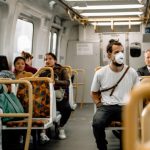How to reduce the risk of COVID-19 infection in the workplace

A lot has changed during the last year. The pandemic made us all focus on protecting our health, family, friends, and colleagues. It also heavily influenced the way we work and do business of any kind. With the start of the vaccination, the idea of returning to the workplace is looking not so distant anymore.
However, the risk of infection is still present, as the numbers of infected individuals keep changing, and vaccination is not happening at a similar rate in all countries worldwide. With all that in mind, it is essential to define and impose measures that will reduce the possibility of employees getting sick. Keep in mind that you cannot implement all of them in a particular workplace. There is no one-size-fits-all solution but only practices that have been tried and proved to work and help contain the disease’s spread.
Conduct a risk assessment
When thinking about which measures work best for your workplace, it is necessary to analyze and evaluate risks first. Identify work activities that might spread the virus; look for persons who are most at risk; think how likely they are to be exposed; finally, remove those activities or control them in the best possible way. Your focus should be on workers who are highly vulnerable to infection – such as those that are in contact with a considerable number of clients during work hours. Talk with them to get all the relevant information and carry out measures accordingly. Practical steps include supplying employees and rooms with additional sanitizing equipment or facilities, as well as staggering shifts.
Insist on basic hygiene measures
Before the COVID-19 pandemic, research showed that at least 50% of people did not wash hands after using the toilet in many countries. With the pandemic, that number probably changed, but it is still necessary to insist on elementary hygiene measures in spreading COVID (and other diseases). Some of them are:
- Washing hands is mandatory – before and after breaks; at the beginning and the end of the workday; also during work time, whenever it is appropriate.
- Employees should wash hands with water and soap for at least 20 seconds.
- Disinfect frequently touched objects such as doorknobs, refrigerator handles, and coffee machines.
- Cleaning crews should regularly clean commonly used spaces such as bathrooms, kitchens, and rest areas.
- Insist on workers not touching their face (particularly nose, mouth, or eyes) with unwashed hands.
Enforce social distancing
As some scientists state, humans beings are “wired” to connect with others. The pandemic brought a sudden halt to it all, as we now need to keep our distance at all times. Spending time in restaurants and coffee shops is either discouraged or completely banned. Traditional ways of greeting each other, such as the handshake, are currently exchanged for elbow touching. Even with all that, employees need some additional social distancing measures to be safe during a pandemic:
- Activities or situations where employees have to be within two meters (six feet) of each other should be limited or completely avoided, if possible.
- Install plexiglass screens on counters or office spaces to separate the employees.
- Sick workers are required to stay at home. Others should avoid contact with them.
- Use utilities such as a Bluetooth contact tracing tool to trace contacts between employees and separate those in touch with those who reported being sick.
- Whenever it is possible, have employees work from home. Just be sure to provide all the necessary tools – phones, computers, videoconferencing software.
Ventilation is important
When ventilation is adequate, it reduces the amount of virus in the air. It also lowers the risk of aerosol transmission – a situation when a person with a virus spends some time in an enclosed area, and another person enters the same space and breathes in the small particles (aerosols) that are left in the air by the infected individual. However, ventilation will not help with contact or droplet transmission, so it is essential to maintain a high level of hygiene and social distancing.
- Limit the number of people in any given area – it is the easiest way to reduce spreading by aerosol particles.
- Any activity that increases breathing volume and tempo (hard physical labor, singing, shouting) should be avoided or kept to a minimum.
- Combine natural ventilation (passive flow of air through open windows or doors) with mechanical (fans and air ducts that bring in fresh air from the outside) whenever it is possible. If only one of these is available because of specific working conditions, make the airflow regular, especially when the employees are in the room.
- Be sure to properly air out all the rooms after work to clear any aerosol particles left in the workplace.
You can find the latest information about the effects of specific measures on particular webpages such as the World Health Organization or various government work-related pages. Be sure to check them regularly and learn further details. You can’t eliminate the risk, but you can create conditions that lower the possibility of infection and keep your employees healthy.
Keith Coppersmith is an Adelaide based business consultant with a degree in Media Management. With experience in numerous small businesses and startups, he enjoys giving advice on all things marketing.








